It's About Time #1: Introduction to Time Alignment
A series of blog articles about Time Alignment
28 February 2024
Technical Articles
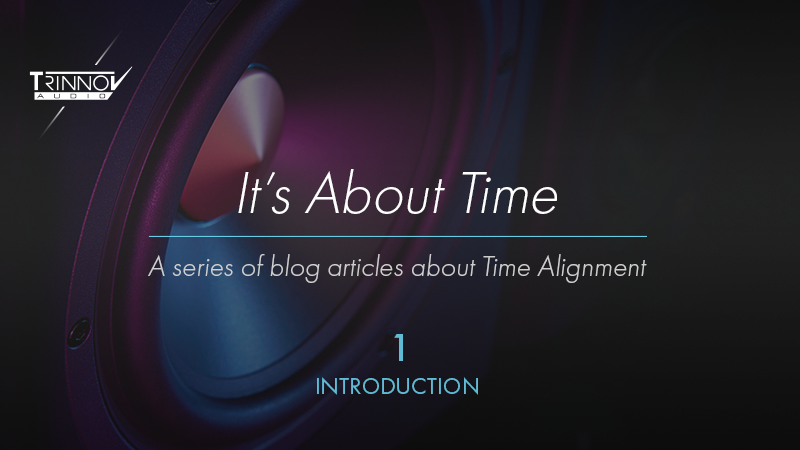
It's About Time is a series of technical articles aiming at explaining an essential yet less well understood concept: time alignment. We will go over the concept of time alignment in 4 episodes covering speakers, drivers and subwoofers alignment as well as impulse response.
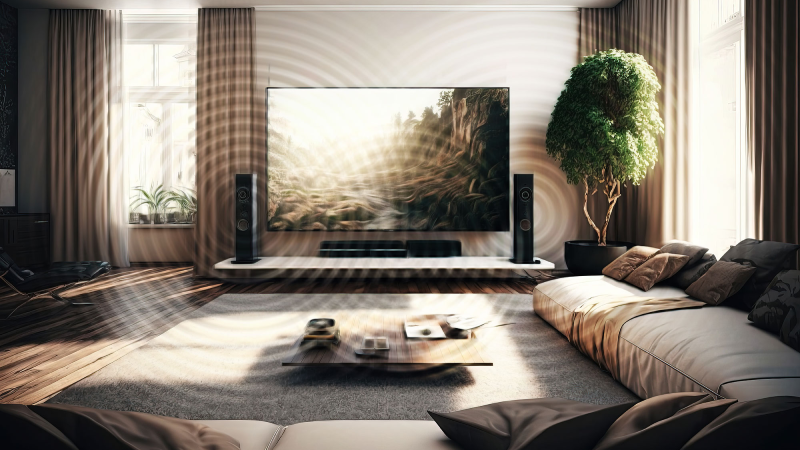
If you care about recreating a convincing and detailed three-dimensional soundfield that can make you feel like you are somewhere other than your living room (whether it be music, movies, or video games), time alignment is absolutely essential. It is important on several different levels, which may explain why many can be confused. Its significance is such that it has been a focus of Trinnov’s research and innovation for the past 20 years.
Our focus has always been on recreating this convincing “bubble” of sound that can transport your senses to a different time and place. This fact is reflected in our name: “Tri” (for “three”) plus Innovation and Audio stands for our goal of innovation in 3D sound.
In the world of high-performance audio, most people understand that ”frequency response” is important. It is sometimes called by different names (e.g., amplitude response, magnitude response), but the idea that different frequencies need to be played at appropriate volumes with respect to one another seems pretty basic. You want to hear all the sounds reproduced at their correct levels: deviations simply sound wrong, unnaturally favoring some frequencies over others.
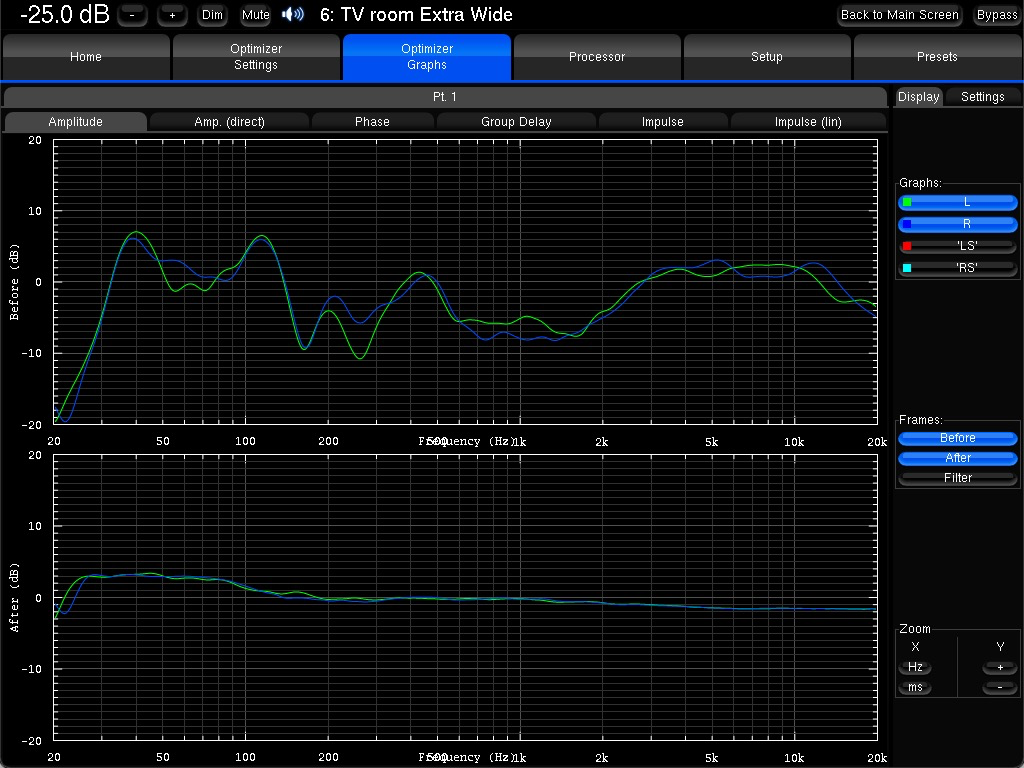
Frequency response is important but does not tell the whole story
“Time alignment” is equally essential, but less well understood. High-quality audio reproduction involves not only having all the various sounds at the correct volume with respect to each other – those sounds also need to arrive at the proper time with respect to each other. Our ears are quite sensitive to even small timing errors.
How we hear
Imagine that you have closed your eyes and someone standing about ten feet (3m) in front of you snaps their fingers. You could point to where that sound came from, even when your eyes are closed. Most people with normal hearing can detect even small movements of such sounds, on the order of a few inches (cm). The speed of sound traveling through air is roughly 1130 feet per second (343m per second). Think about how sensitive our ears must be to these small timing differences if we can detect such small changes in arrival times. A difference of even 0.1-0.2 ms (around a ten-thousandth of a second!) will cause us to “localize” the sound as coming from a slightly different direction.
An important part of how we perceive such things has to do with Inter-Aural Delays. When two similar sounds arrive at our ears at nearly the same time, our attention is drawn toward the first arrival we hear. In the finger-snap example, if the sound is a bit to our left, it reaches our left ear first and we perceive it as coming from the left. If it is further to our left, the delay between arrival times at our ears is greater, and we perceive it as being further to the left (which it is).
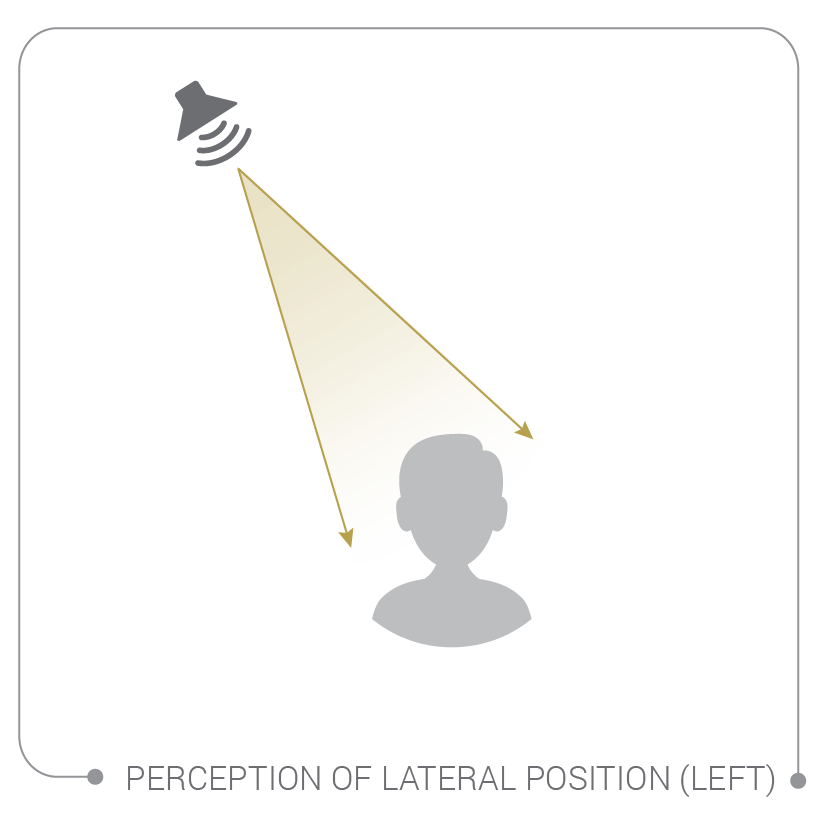
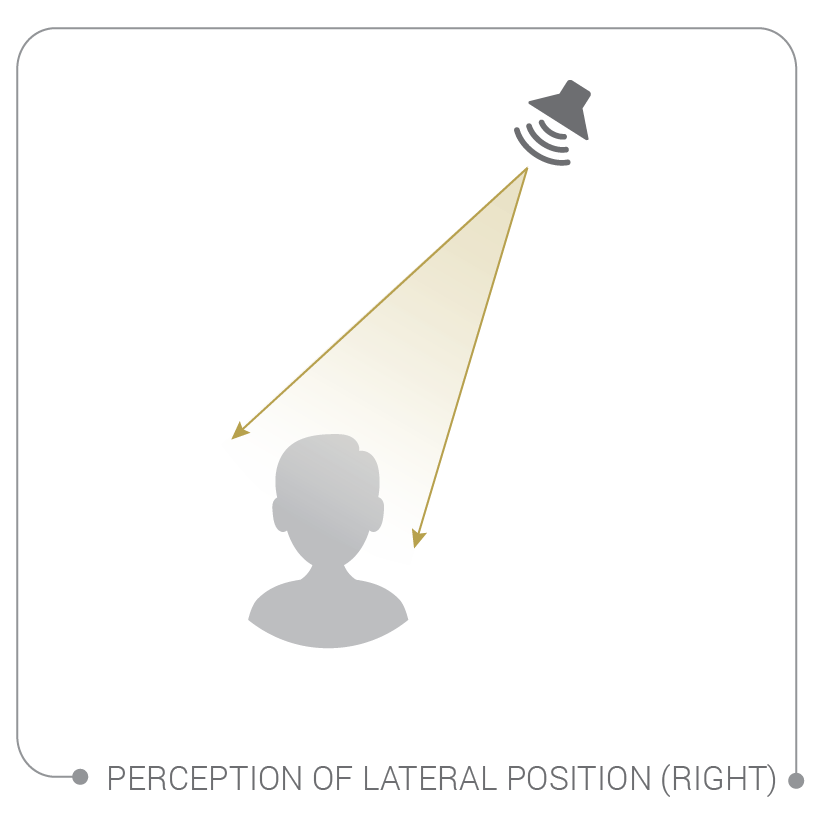
Interestingly, stereo imaging works the way is does by “faking” the sound of something directly in front of you:
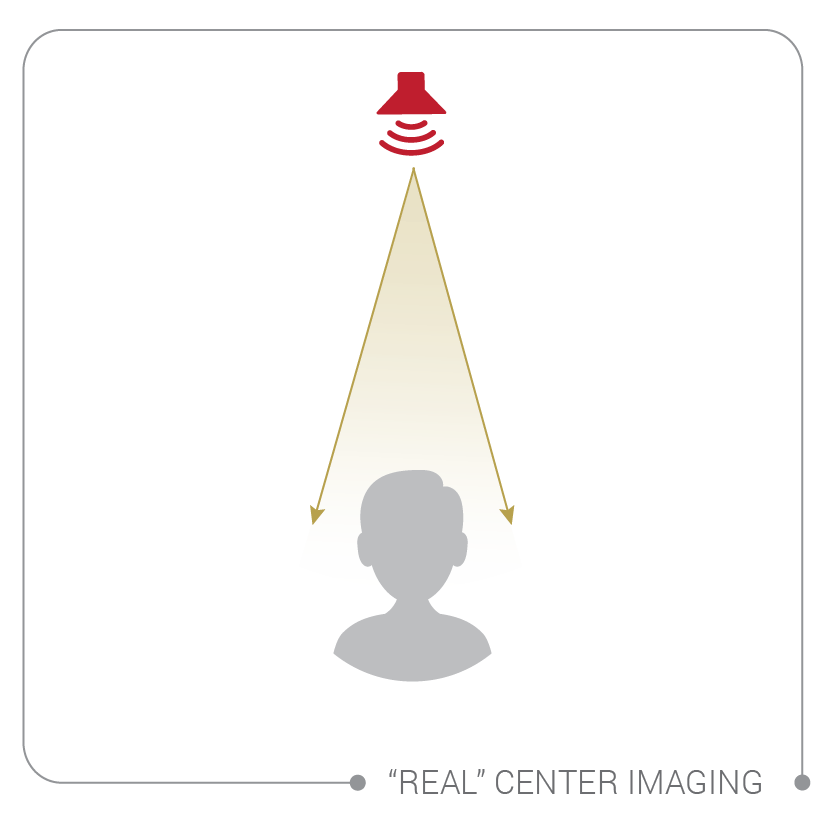
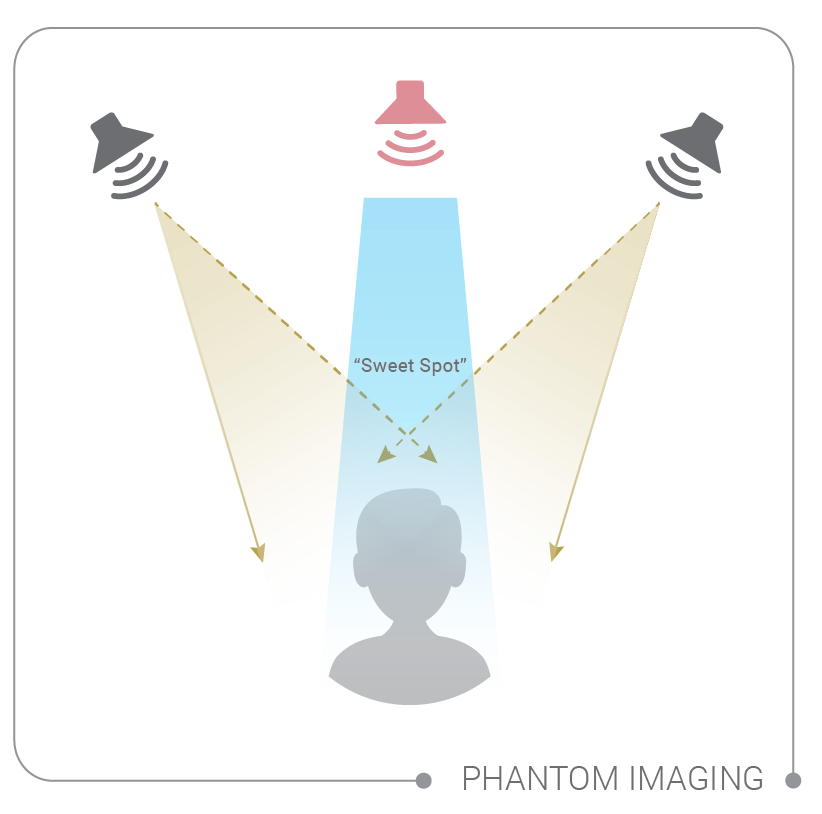
But note that, in stereo reproduction of a center image, each ear hears each speaker twice since there are two speakers rather than a single instrument. This confuses our hearing just a little since it is not a natural occurrence. So the center image can be somewhat less well-defined than in real life.
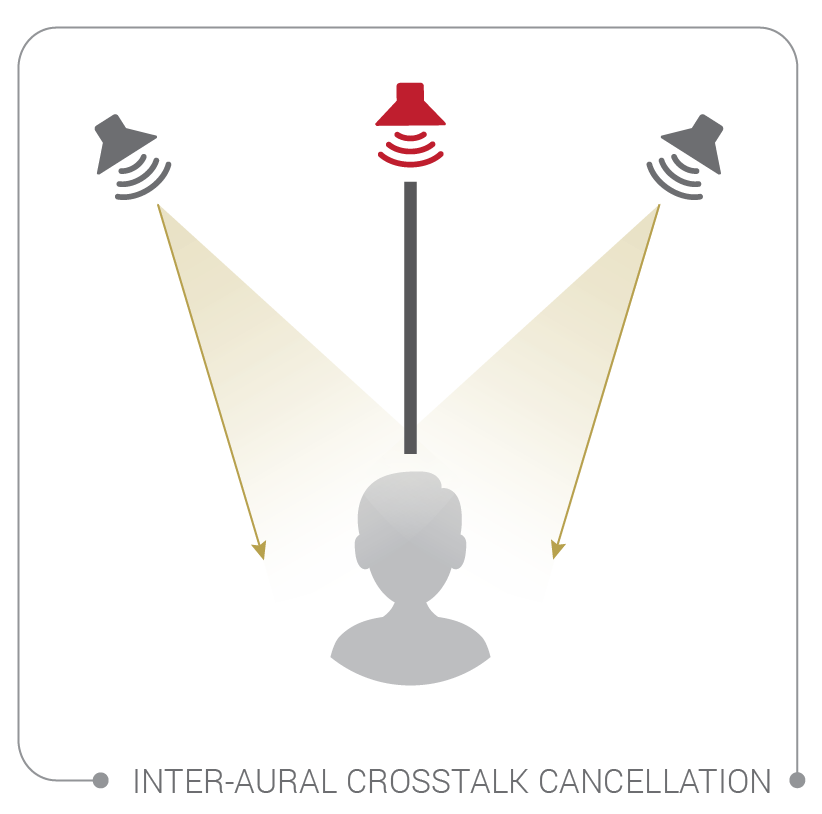
Some companies have invented technologies designed to minimize the “dotted line” arrivals in the Phantom Imaging illustration above. Imagine placing a solid wall of absorptive material that extends from your nose to somewhere between the speakers:
As goofy as this sounds, it works! By eliminating the second arrival at each ear, the perception of the center image gains focus and realism that will surprise you if you actually try the experiment.
Nerdy sidebar: our ability to hear small movements laterally is better than the same ability vertically. This is due to our ears being on the sides of our heads. Even a small movement of something horizontally will cause its sound to arrive at one ear before the other. (There is also something called the head-related transfer function, or HRTF, that goes beyond the scope of this article). By contrast, our perception of vertical directionality in sound is based on the asymmetry of our outer ears. The reflections from our outer ears that make it to our eardrum are slightly different for various vertical angles – we learn the idiosyncrasies of our own particular ears as young children. But people who pay close attention to such things can still hear relatively small changes in height alone – just not quite as small as changes in the horizontal plane.
Now that we've introduced the concept of time alignment, you start to understand just how essential it is on several different levels. Given the sensitivity our ears, it is highly also challenging to achieve a stereo reproduction of a center image, and even more challenging when increasing the number of speakers mixed with subwoofers. We'll cover the other aspects of time alignment in the next It's About Time articles.
Related articles:
It's About Time #3: Driver Time Alignment

